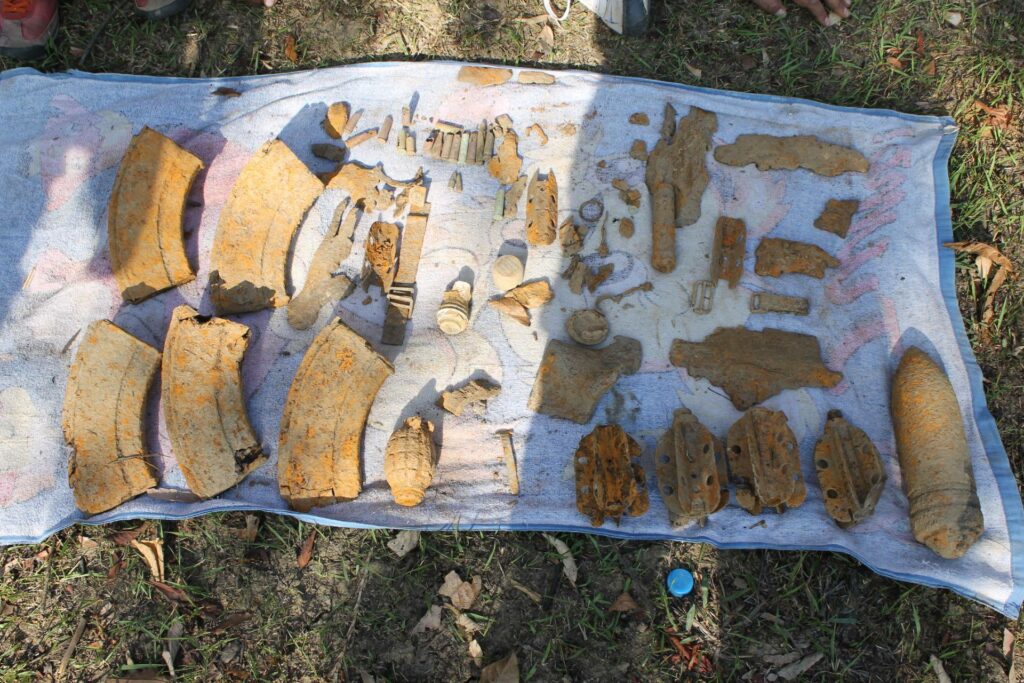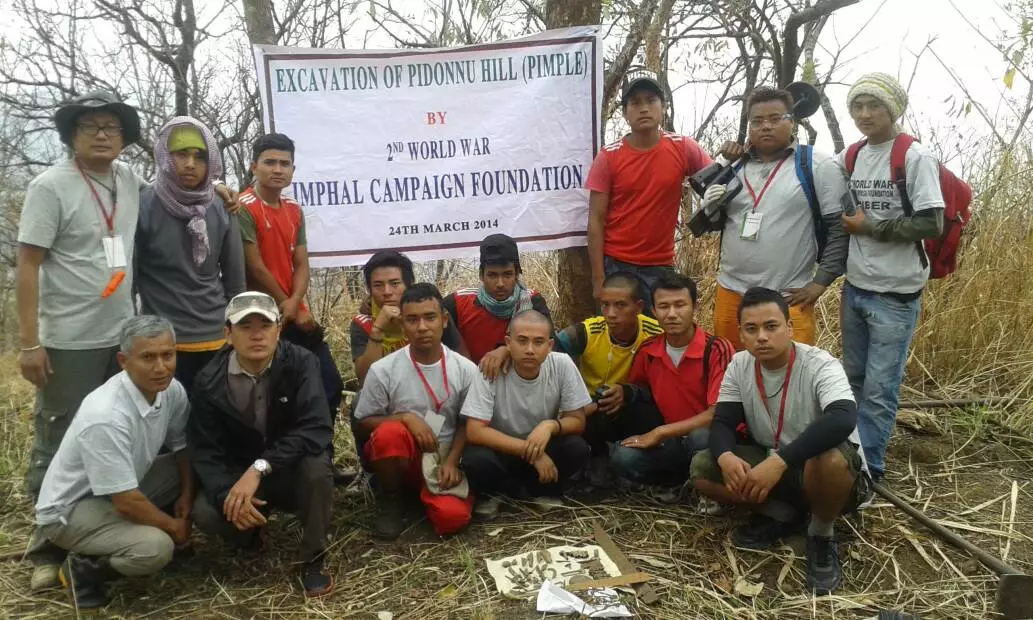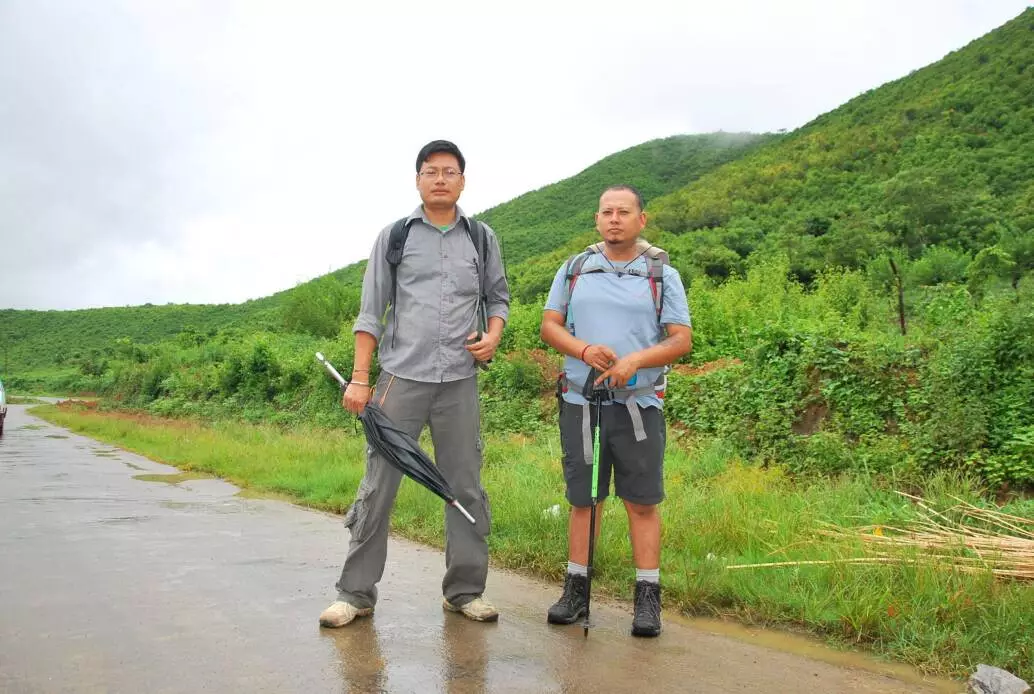Did you know Britain’s ‘greatest battle’ was fought in Imphal and Kohima during WWII. Meet Rajeshwor Yumnam and his team of volunteers who are excavating relics and remains from this forgotten war
For an event that turned the tide of history, very little is known about the twin battles fought in Imphal and Kohima between the British-led Allied forces and the Japanese during World War II. In 1942, the Japanese successfully invaded Myanmar forcing the surviving Allied forces to retreat to India. Then, in March 1944, the Japanese began an advance against India’s north-east frontier in order to capture the British supply bases in Imphal and cut the road linking Dimapur and Imphal at Kohima. According to the Britain’s National Army Museum (NAM) website, “with Imphal in their hands, the Japanese would be able to interrupt air supplies to China. It would also give them a base from which to conduct air attacks against India”.

However, the unforgiving terrain and relentless bombardment by renewed Allied forces over five months of fierce fighting dealt Japan a crushing defeat. Incidentally, this twin Battle of Imphal and Kohima was voted as Britain’s greatest battle by a 2013 poll conducted by NAM. As per the NAM website, the Japanese 15th Army, 85,000-strong, eventually lost 53,000 dead and missing. The British sustained 12,500 casualties at Imphal, while the fighting at Kohima cost them another 4,000 casualties. Most were buried where they fell with no names or headstones to identify them. While the Imphal War Cemetery maintained by the Commonwealth War Graves Commission contains 1,600 graves, the remains of thousands of fallen soldiers and war relics lie scattered and forgotten in the verdant hills and valleys of Manipur.

The ‘Battlefield Diggers’ of Manipur
Founder of the 2nd World War Imphal Campaign Foundation, Rajeshwor Yumnam, has been working tirelessly along with the foundation’s president Arambam Angamba and their team of volunteers to unearth these forgotten remains and relics of the war that changed life in Manipur. “As children, we would hear stories of the war from our parents. They would tell us how they had to hide in bunkers at the foothills of mountains or forests to take shelter but we never really learnt the details of what happened in school or through any form of recorded history,” Yumnam says.
It was around 2008, when Yumnam took up a job with a telecom company and started travelling to the interiors of Manipur that his interest in the war piqued. “We came across a lot of relics pertaining to WWII. Since I have a research background as I had done my MPhil from Punjab University, I started collecting books to learn more about the war here. Unfortunately, there were very few books on the topic,” recalls the 46-year-old. As luck would have it, Yumnam happened to meet one such author Christopher Johnson who wrote The Forgotten Army’s Box of Lions, a detailed account of the Battle of Kangla Tonbi – a fierce encounter in a small village in Manipur between the Japanese and Allied troops of which Johnson’s father, Sergeant Major George Johnson, was a part of. According to Yumnam, they did a lot of research together and Johnson even sent in copies of regimental war diaries from the National Archives London and Imperial War Museum.
In 2011, Yumnam got his first metal detector and went on to uncover enough war relics to fill up a room. In fact, Yumnam and Angamba opened the Imphal War Museum in 2014 to showcase their finds and share this forgotten history.
It’s a time-consuming and painstaking process though – one that Yumnam has to do during his free time on holidays or Sundays since he has a full-time day job with Reliance Jio. “However, my research work happens every day as I’m up reading late into the night,” says the Imphal resident, who has a library at home filled with books, archival instruments such as war diaries, old maps and such. To find the battle or grave sites, Yumnam uses clues from war diaries and superimposes old maps upon new ones and figures out the GPS coordinates of the location.

More recently, in 2019, Yumnam and his team of volunteers uncovered a mass grave containing remains of Japanese soldiers. Their foundation has teamed up with the Japan Association for Recovery & Repatriation of War Casualties (JARRWC) in Imphal to conduct research and carry out excavation work in aid of finding remains of Japanese soldiers. “This organisation recovers remains of Japanese soldiers who died overseas during battle. They have projects across Myanmar, Malaya, Singapore, Solomon Islands and more. They’re planning to conduct DNA testing on these recovered remains,” Yumnam adds.
Remembering the forgotten & fallen soldiers
Given the amount of time and effort Yumnam and his team put in, one wonders what the payoff is. None of them receive any monetary compensation for the work they do. “Over 80 per cent of the soldiers who were killed here don’t have a grave. They’re lying somewhere in these mountains without their families knowing where they are. If we can help any family reunite with the remains of their forefathers or throw light on what happened, our work becomes meaningful,” Yumnam responds.
Yumnam narrates an incident that exemplifies this. A few weeks before the first lockdown would shut everything done in March 2020, Yumnam along with a few members of the foundation climbed a hill in Imphal in search of the remains of a British soldier Private David Tod. This was in response to a request by Tod’s great granddaughter, Sharon, a care worker in Edinburgh who had come to know of Yumnam’s work via Johnson. In fact, a number of war veterans wanting information or assistance in locating remains of their family members who died in the Battle of Imphal have been in touch with Yumnam.

“As per records, 16 Allied soldiers had died here. A year or two after the war, they recovered only 14 bodies. Since the area was overgrown with dense jungle, they couldn’t find the remaining four,” Yumnam explains. One of the missing bodies was that of Pvt. Tod’s. Until then, Sharon and her family believed that he had died in the jungles of Myanmar during the Burma campaign. While Yumnam’s team did find personal effects of soldiers, no bones were found. However, they laid crosses as per Sharon’s wishes marking the spot where they believed Tod and his company had fallen. Sharon, who watched the entire excavation via live stream from Edinburgh, was moved by their efforts. In fact, in an interview conducted by British TV network itv.com, she said, “It’s amazing to know where he is now. He’s a little less lost. Before, we just thought he’s out there somewhere in the jungles or mountains of the India-Burma border. So to know where he is, his location, it’s a little less lonely for him.”
‘The war is not over’
While the Battle of Imphal ended 78 years ago, Yumnam is pained by the fact that the people of Manipur are still paying the price for it. Sadly, unexploded bombs and artillery shells from the war line the countryside even today claiming lives of unsuspecting villagers and residents ever so often. “Recently, two people were killed while digging a pit on their land,” Yumnam. There are many such stories that fail to garner the notice of the authorities or mainstream media. “The war isn’t over for Manipur. Now, we have to fight another battle to recover these unexploded ordinances before they claim any more lives,” Yumnam reiterates.
Stories of war and peace
In 2019, the Imphal Peace Museum was inaugurated to mark the 75th anniversary of the Battle of Imphal. Located at the base of the Maibam Lokpa Ching (Red Hill) which is about 20kms from Imphal, this was the site of the last battle fought in Manipur. The site is also home to the Japanese War Memorial which was built in 1994 to mark the 50th anniversary of the battle. Funded by the Nippon Foundation, the museum is the joint effort of Manipur Tourism Forum and the 2nd World War Imphal Campaign Foundation. In fact, a team of people involved in the design and curation of the museum including Yumnam were sent to Japan in 2018 where they spent 10 days studying museums across Tokyo and Okinawa in an effort to plan the Imphal Peace Museum.
This award-winning museum is divided into three sections – war, post-war and life & culture. “Many important resource persons – from Manipuri historians to designers – were involved in curating the museum which took one-and-a-half years to build. I did the research work for the war section. We got photographs from the Imperial War Museum in London and also put up a few of the relics we found on display,” Yumnam tells us. The hope is that the museum will not just be a mute testimony to the forgotten war and its impact on the people in the region but also inspire those who visit it to carry their stories afar.


One Response
Great post.